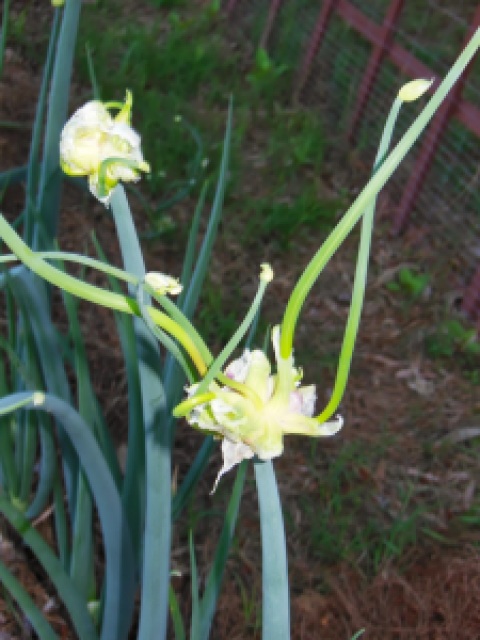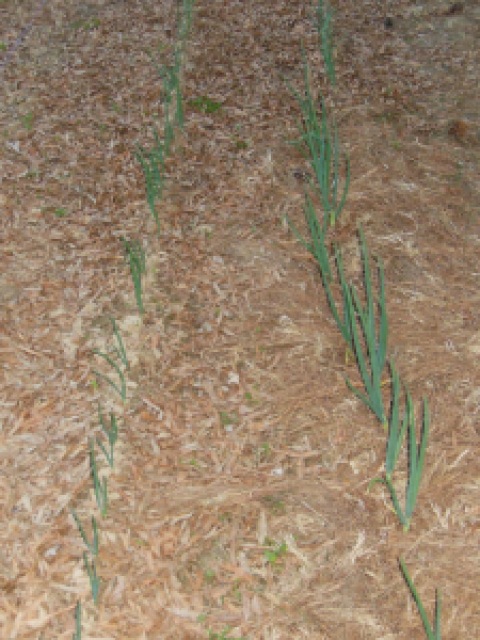Knowing the proper time to harvest veggies from the garden can be difficult. Luckily, with onions there is no guess work. You can harvest onions throughout the season to use as you need them, or you can leave them in the ground to get bigger bulbs. Once the tops of the onions fall over and dry out, the onion bulb will stop growing.
Harvesting the onions can be as simple as grasping the stalk and pulling. The bulb should pop right out of the ground. If you have a stubborn onion, you can simply stab a small hand spade under the onion and pop it out, just be careful to not hit the onion.
Once the onions are harvested, they need cured prior to storage. It is best to harvest the onions on a warm sunny day, so you can let your onions begin to cure in the sun for a day or two. After that, or if the weather is not cooperating, they need to be placed in a shady location with good airflow. Good airflow is very important so make sure they are spread out and not stack on top of each other. We used a short, wide crate with lots of air holes. You can lay them out on a table, or even braid the stalks of several onions together and hang them to cure.
 |
| Onions curing in our crate. |
|
After curing for two to three weeks, the roots and any stalk remaining should be dry and brown. Also the skin of the onion should be very dry like paper. After this onions can be stored in a cool dry place. Onions properly cured can be stored for up to six months.
More from the Winter Onions Series:
Our First Winter Onions
4 Month Update
5 Month Update (Comparison to Annual Onion Sets)
6 Month Update
Harvesting and Curing Onions
One Year Update






